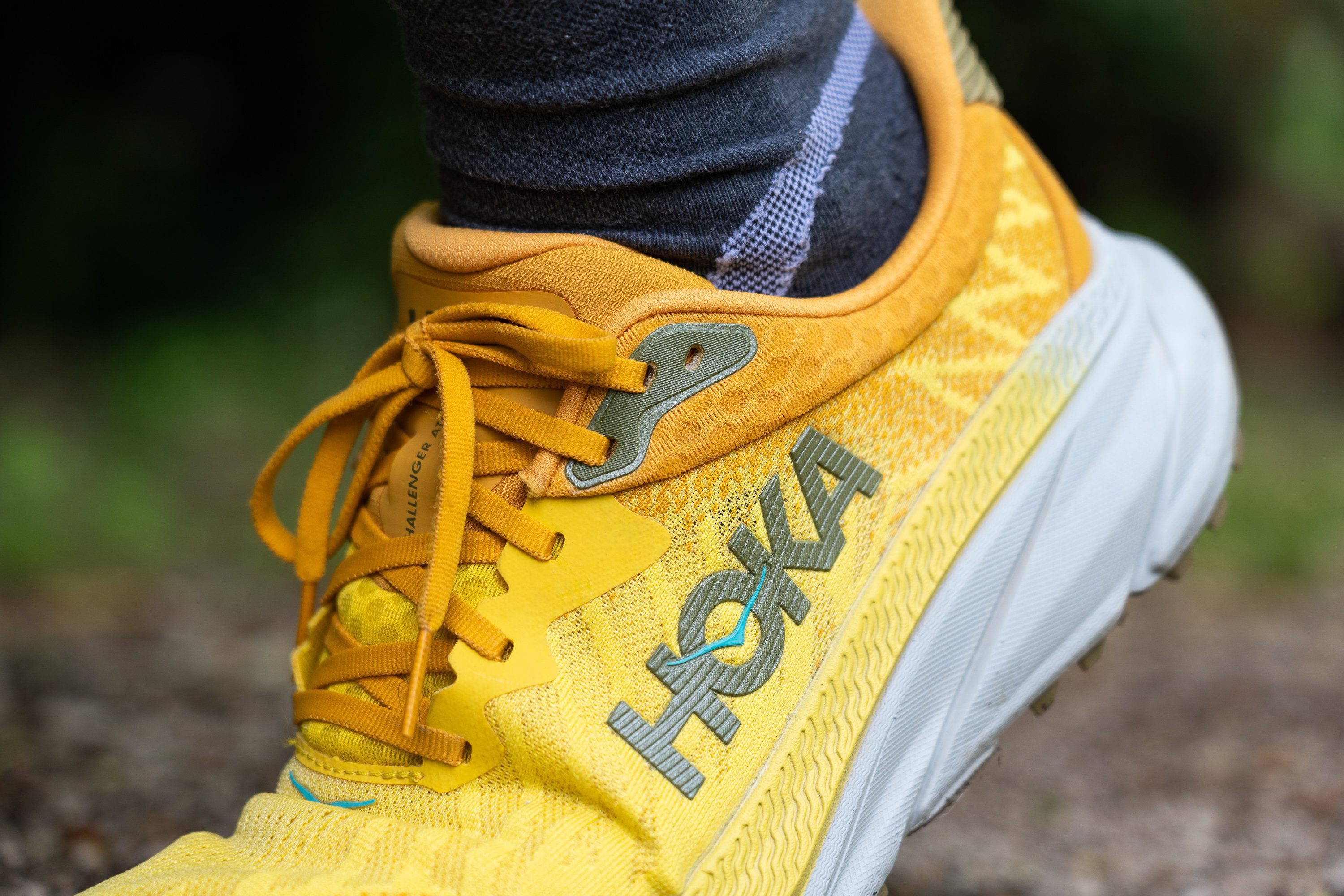Our verdict
Pros
- Lighter than before
- Effective lockdown
- Stable ride
- Superior comfort
- Plenty protective underfoot
- Excellent feel on roads
- Doubles as a walking shoe
Cons
- Ride lacks excitement
- Not durable outsole
- Greater-than-expected drop
- Narrow toebox
Audience verdict
- Top 25% most popular running shoes
Comparison
The most similar running shoes compared
+ + Add a shoe | |||||
|---|---|---|---|---|---|
| Audience score | 85 Good! | 89 Great! | 75 Bad! | 89 Great! | |
| Price | $145 | $150 | $155 | $170 | |
| Trail terrain | LightModerate | Light | LightModerate | LightModerate | |
| Shock absorption | High | High | High | - | |
| Energy return | Low | Moderate | Low | - | |
| Traction | - | - | High | - | |
| Arch support | Neutral | Neutral | Neutral | Neutral | |
| Weight lab Weight brand | 8.8 oz / 250g 8.8 oz / 250g | 10.1 oz / 286g 10.1 oz / 286g | 9.5 oz / 269g 9.7 oz / 275g | 9 oz / 255g 9.4 oz / 266g | |
| Drop lab Drop brand | 8.8 mm 5.0 mm | 9.6 mm 9.5 mm | 10.1 mm 8.0 mm | 6.8 mm 6.0 mm | |
| Strike pattern | HeelMid/forefoot | HeelMid/forefoot | Heel | Mid/forefoot | |
| Size | True to size | True to size | - | True to size | |
| Midsole softness | Soft | Soft | Soft | Balanced | |
| Difference in midsole softness in cold | Normal | Normal | Normal | Normal | |
| Plate | ✗ | ✗ | ✗ | Rock plate | |
| Toebox durability | Good | Very good | Good | Very bad | |
| Heel padding durability | Decent | Good | Good | Good | |
| Outsole durability | - | Good | Good | Decent | |
| Breathability | Warm | Warm | Breathable | Warm | |
| Width / fit | Narrow | Medium | Medium | Narrow | |
| Toebox width | Narrow | Medium | Medium | Wide | |
| Stiffness | Moderate | Moderate | Moderate | Stiff | |
| Torsional rigidity | Moderate | Moderate | Stiff | Moderate | |
| Heel counter stiffness | Stiff | Stiff | Stiff | Flexible | |
| Lug depth | 3.1 mm | 3.2 mm | 3.7 mm | 2.9 mm | |
| Heel stack lab Heel stack brand | 32.9 mm 31.0 mm | 34.6 mm 37.0 mm | 40.2 mm 42.0 mm | 28.3 mm 30.0 mm | |
| Forefoot lab Forefoot brand | 24.1 mm 26.0 mm | 25.0 mm 27.5 mm | 30.1 mm 34.0 mm | 21.5 mm 24.0 mm | |
| Widths available | NormalWide | NormalWideX-Wide | NormalWide | Normal | |
| Season | All seasons | All seasons | SummerAll seasons | All seasons | |
| Removable insole | ✓ | ✓ | ✓ | ✓ | |
| Orthotic friendly | ✓ | ✓ | ✓ | ✓ | |
| Ranking | #438 Bottom 33% | #87 Top 24% | #358 Bottom 4% | #82 Top 22% | |
| Popularity | #166 Top 26% | #54 Top 15% | #73 Top 20% | #241 Bottom 35% |
Cushioning
Shock absorption
If cushioning is your main concern, the Challenger 7 delivers. We measured an impressive 131 SA of shock absorption in the heel, along with a solid 101 SA in the forefoot. It's ready for almost any adventure!

| Hoka Challenger 7 | 131 SA |
| Average | 122 SA |
Energy return
The Challenger 7 delivers moderate bounce with only 51.6% in the heel, an area that could use some improvement. The forefoot does slightly better at 57.2%, but it still lacks that fun-filled, springy vibes.
| Hoka Challenger 7 | 51.6% |
| Average | 55.6% |
Size and fit
Size
Hoka Challenger 7 fits true to size (351 votes).
Flexibility / Stiffness
Some people speak of the Challenger as the trail version of the Clifton 9, but it's not the case. For being a trail shoe, the Challenger is quite flexible.
Our lab test showed that the Challenger 7 requires less force (13.9N) to bend by 30 degrees than the Clifton (17.7N).
One of the techniques Hoka employed to enhance flexibility is adjusting the outsole. The center forefoot lug design looks similar to other Hokas, but there are more cutouts down the center and fewer small lugs with greater separation, which makes the shoe really flexible.
| Hoka Challenger 7 | 13.9N |
| Average | 14.7N |
Who should buy the HOKA Challenger 7

If you are looking for a model that lets you transition smoothly from tarmac to single tracks, on your daily runs or ultras at a slow and moderate pace, the Challenger 7 is the shoe for you.
Doesn’t matter whether you are a beginner or an advanced runner, we found it’s really comfortable on almost any terrain, except for very technical trails only.
Who should not buy it
You shouldn’t get it if you:
- want a fun and fast shoe. Consider the carbon-plated HOKA Tecton X instead.
- want a more durable outsole. The HOKA Mafate Speed 4 is a better choice for you.
HOKA Challenger 7 vs Challenger ATR 6
This new iteration is lighter, softer underfoot, 2 mm taller, and has an improved lug pattern on the outsole. Overall, we found the Challenger 7 to be a very worthy update.
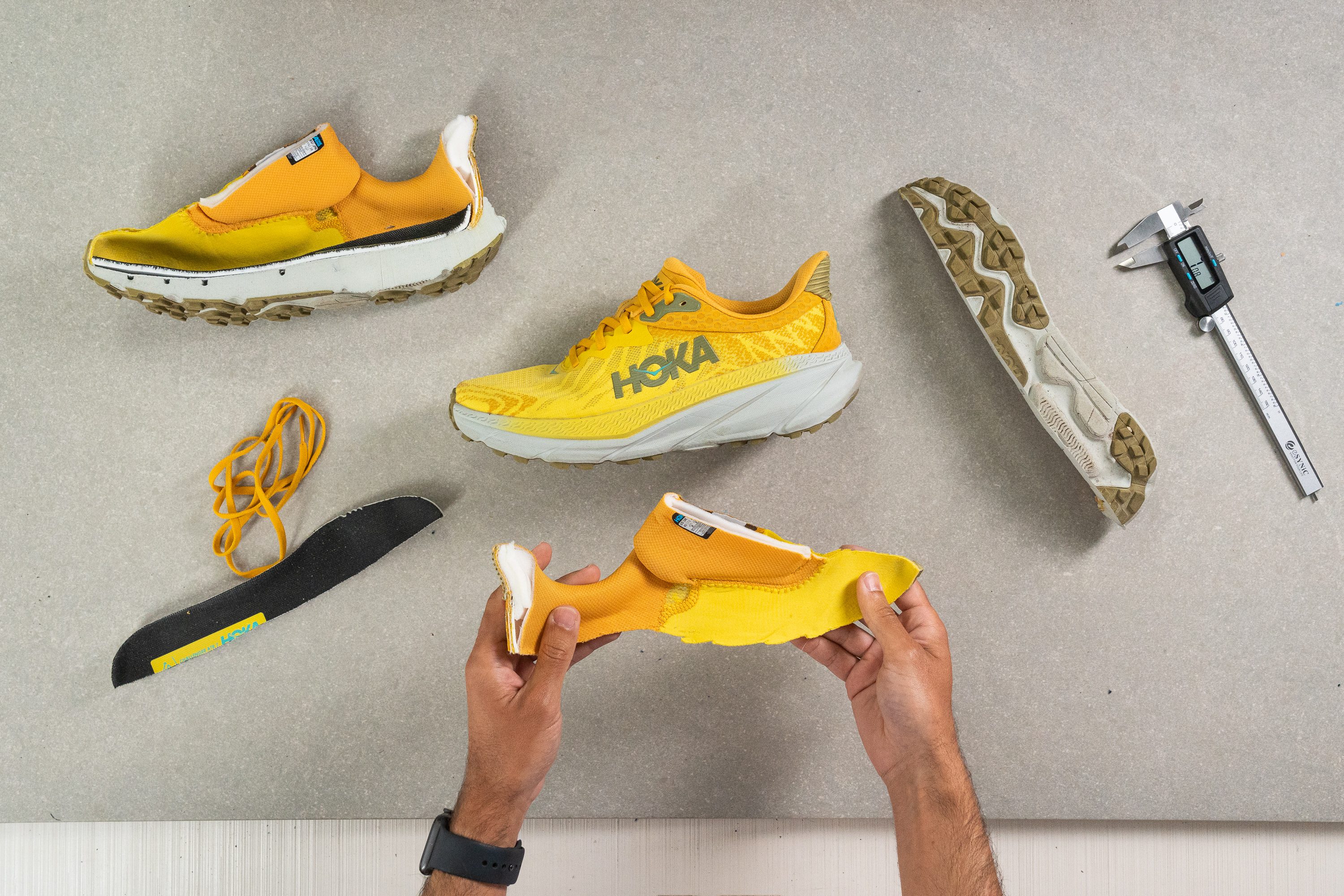
A great upper with poor airflow
We found the Challenger 7's upper to be immensely comfortable! Running, walking, or hiking, our feet were held and pampered inside the shoe.
But despite all those points being valid, it's crucial to note that these shoes don't provide great airflow. This shoe seriously lacks in the breathability department.
With our cutting-edge breathability test, we found significantly limited airflow. This resulted in a low score of only 2 out of 5 for this Hoka shoe.
Under the light test, this fact only became more evident. We genuinely hoped for better toebox ventilation for those scorching summer runs, yet we also understand that striking a balance between top-tier comfort and breathability can be quite a feat, if not outright impossible.

Our beloved microscope served as the final piece of this puzzle. The Challenger 7 features a multi-layered engineered mesh that offers plenty of comfort and exceptional durability, but unfortunately, it does so at the expense of airflow.

The lack of breathability makes these trail shoes ideal for running in the transitional seasons or cooler conditions. They're also a perfect choice if you like to keep your feet at a moderately warm temperature rather than cool during your runs.
A testament to true durability!
At first glance, the shoe's upper fabric felt very similar to that of the Hoka Tecton X. And that's excellent news because the dual-plated Tecton X is built like a tank!
In our Dremel test, we exert 3.2N of force on every shoe for 4 seconds. And the 7th edition of the Challenger demonstrated outstanding resistance in this test!
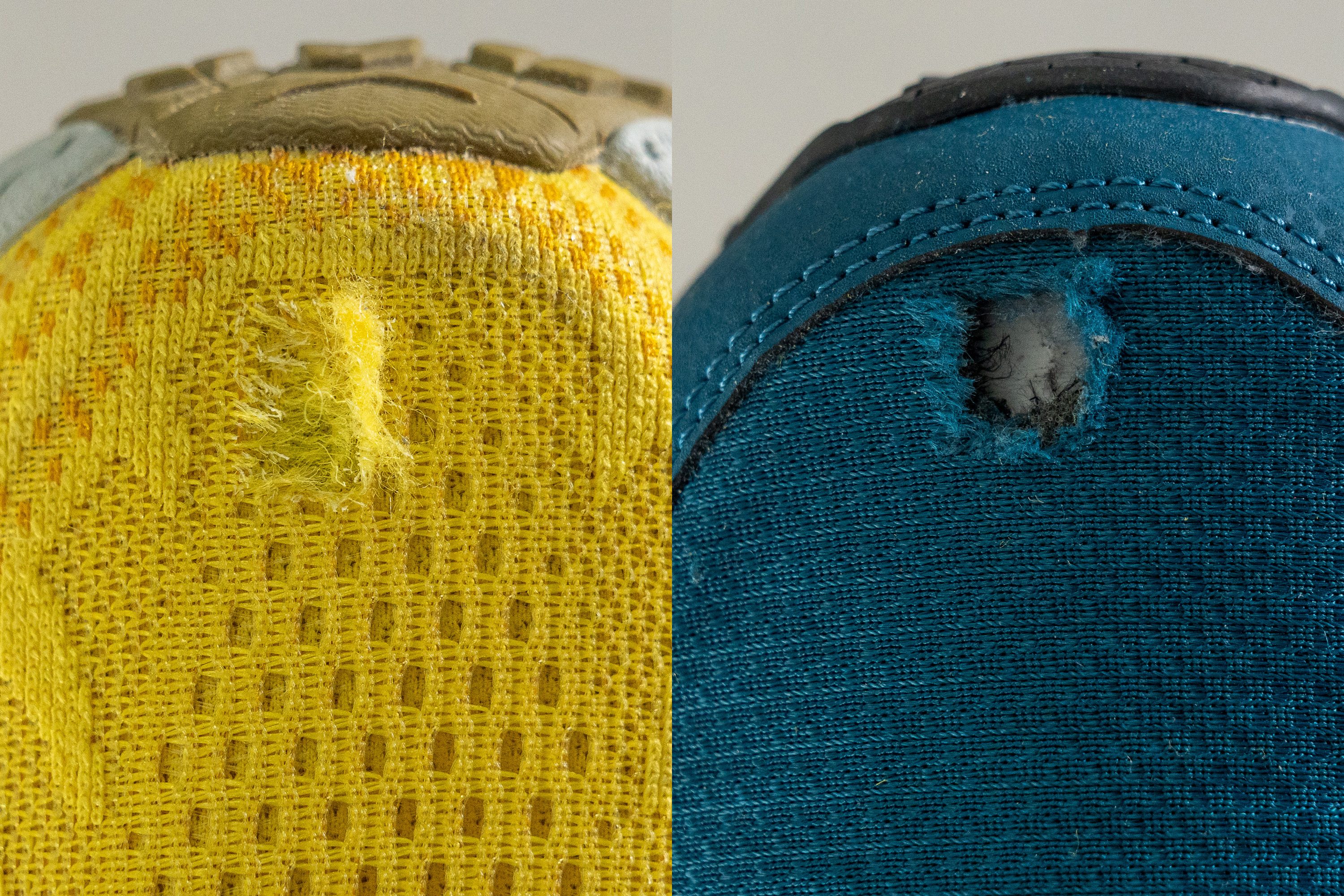
Many trail runners tend to wear out the upper in the toe box, particularly during steep descents. Rest assured, that's not an issue with these shoes.
Another crucial wear point is the heel, where the Challenger 7 once again impressed us. Unless you're wearing some sort of ultra-abrasive or sandpaper-made socks, it's highly improbable you'll wear down the heel in these shoes.
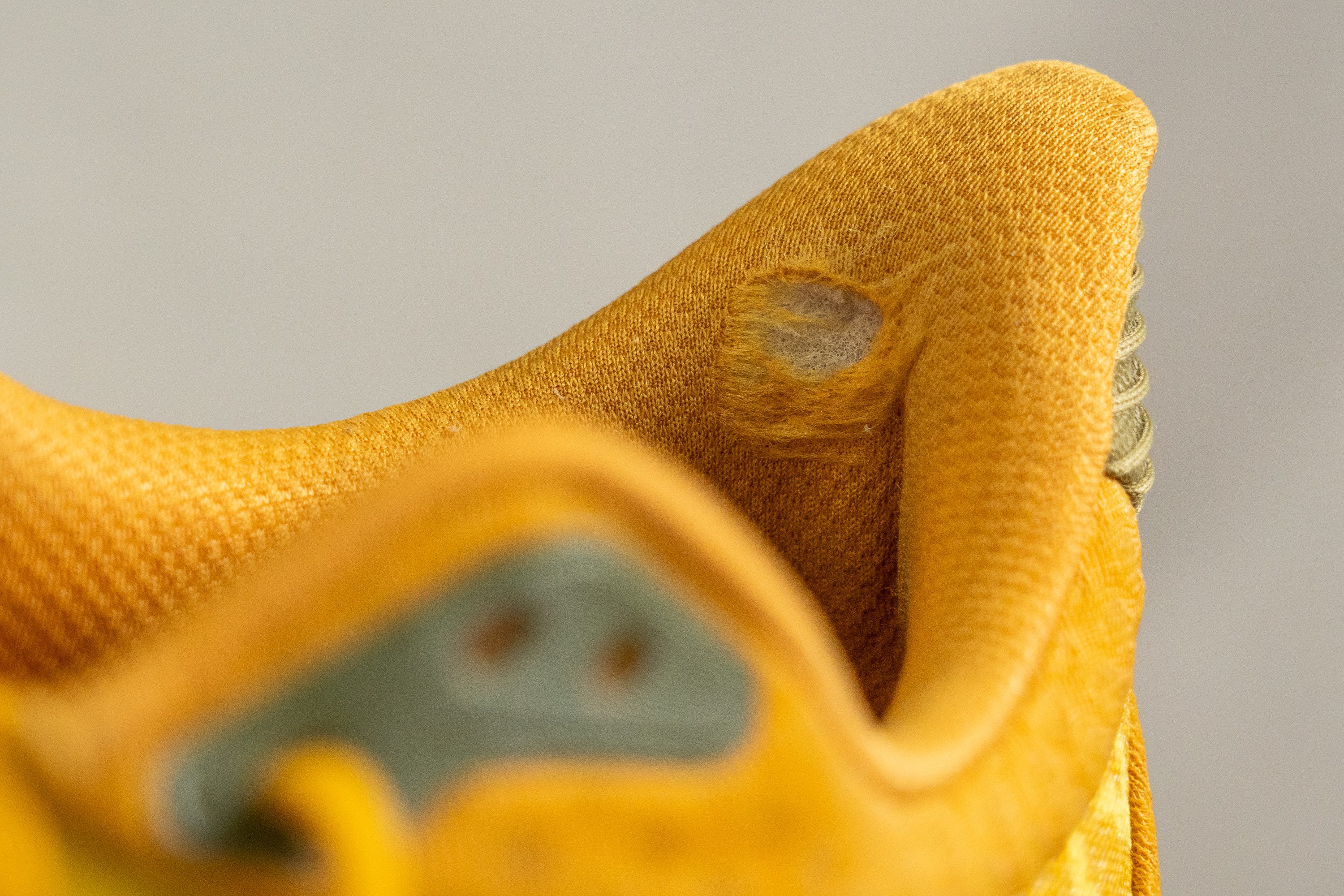
Ultra-comfy yet narrow upper
The Challenger 7 offers some of the best in-shoe experiences among trail running shoes! It feels immediately comfortable and very well-made. Also, the padding in the heel area is absolutely mind-boggling!
But unfortunately, runners with wider feet won't be able to enjoy this blessing of a shoe unless they get the wide option.
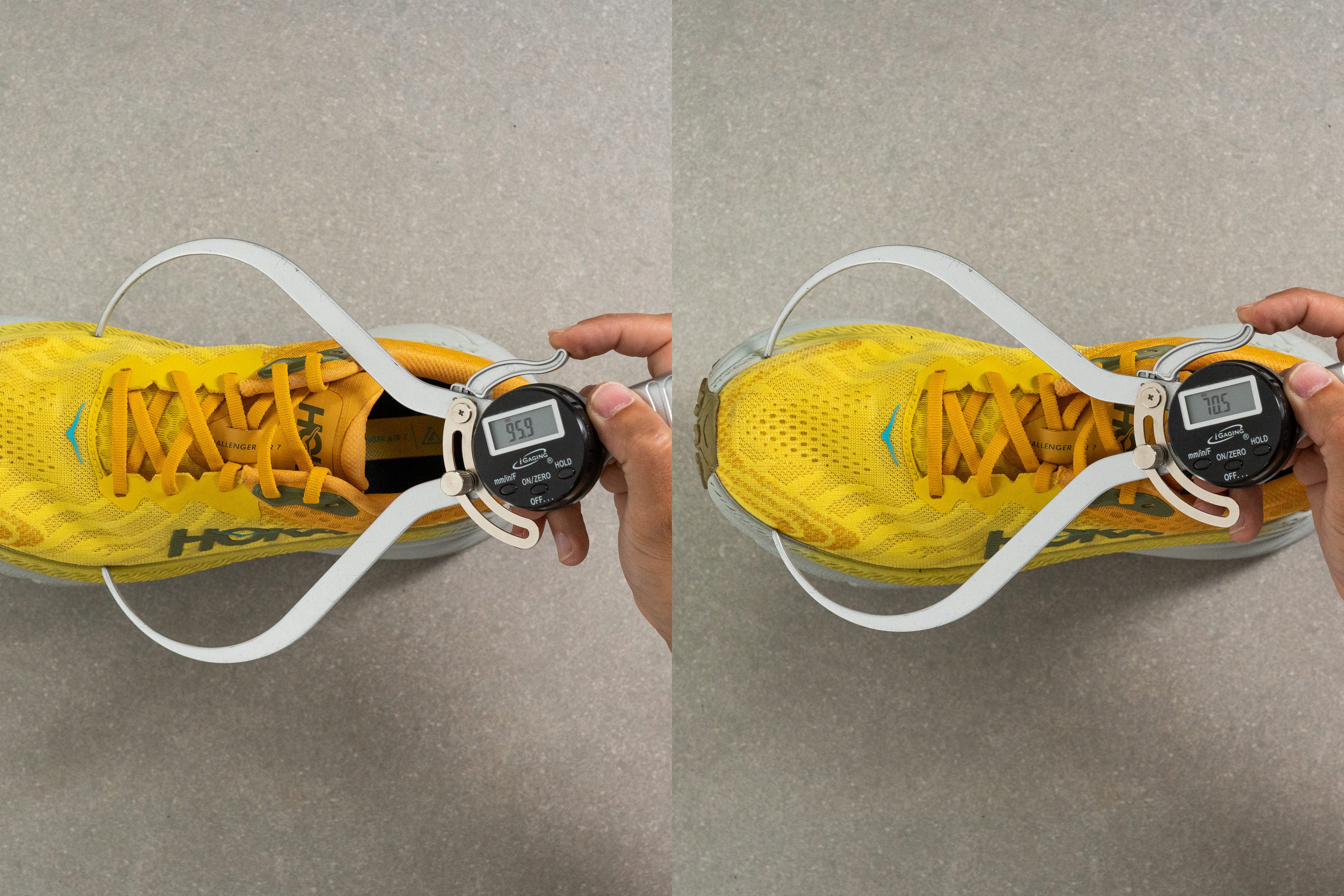
The shoe's upper is exceptionally snug, particularly around the toes.
Based on our meticulous measurements of the toe box, we found that the upper is 95.9 mm in the widest part of the forefoot (3 mm narrower than average). And around the big toe, it is 70.5 mm wide (6.5 mm narrower!).
Cushy and cozy, but steeper than we thought
Even though we didn’t find the ride to be particularly exciting, the shoe's rockered geometry did add smoothness and enough responsiveness.
Besides, the large amount of cushioning felt utterly plush and protective, offering total underfoot comfort. Hoka claims that this shoe has a 31/26 mm stack with a 5-mm heel-to-toe drop.

We absolutely need to have a heart-to-heart with Hoka, as they're the company that diverges most from our metrics. Our measurements in the lab unveiled a 34.2/25.0 mm stack with an 8.8-mm drop, creating a mind-blowing—hold-up!—76% increase.
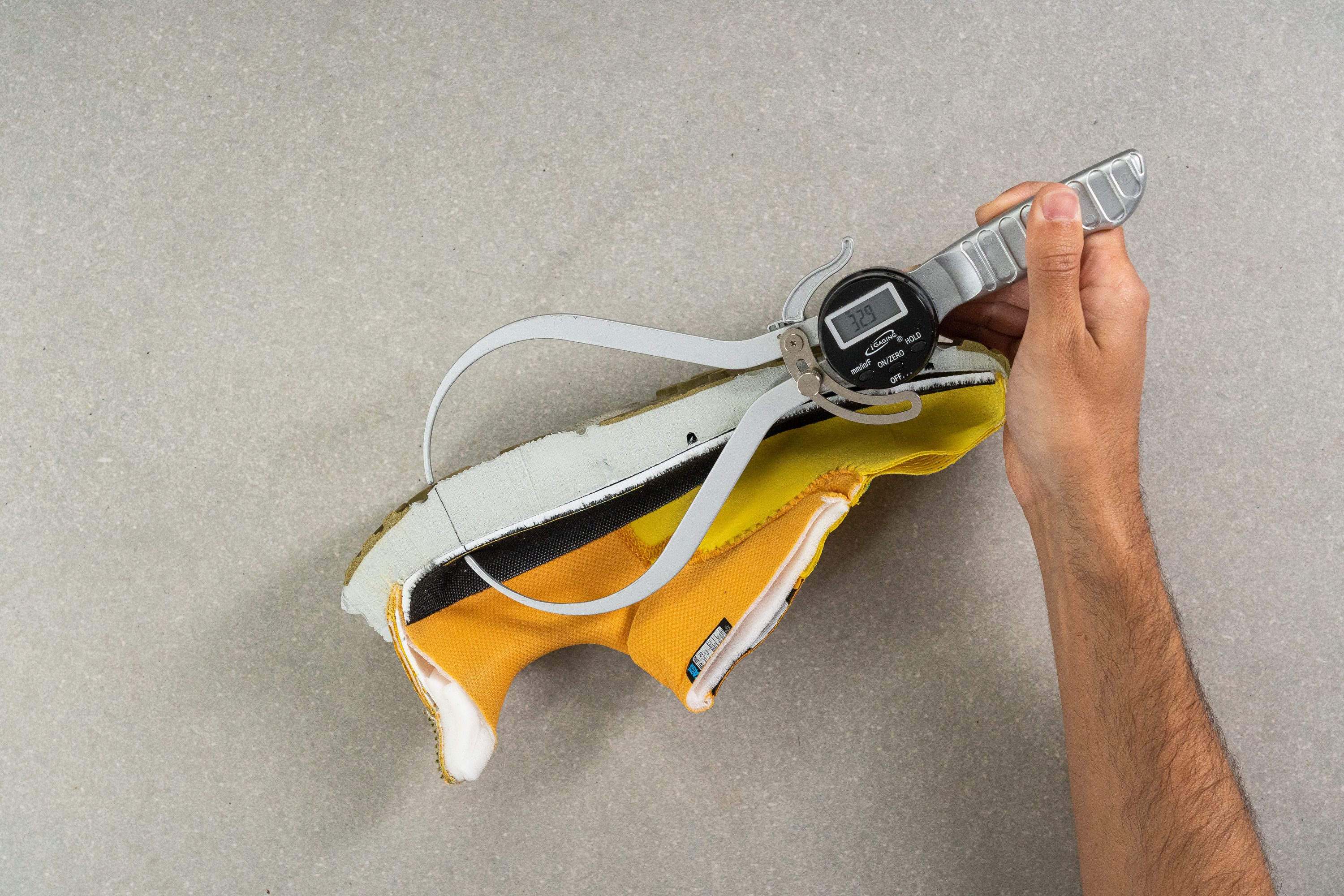
On a positive note, the Hoka Challenger 7 indeed has a super plush cushioning setup. Measuring the foam with a durometer, we got 18.8 HA which is 46% softer than your typical trail shoe!
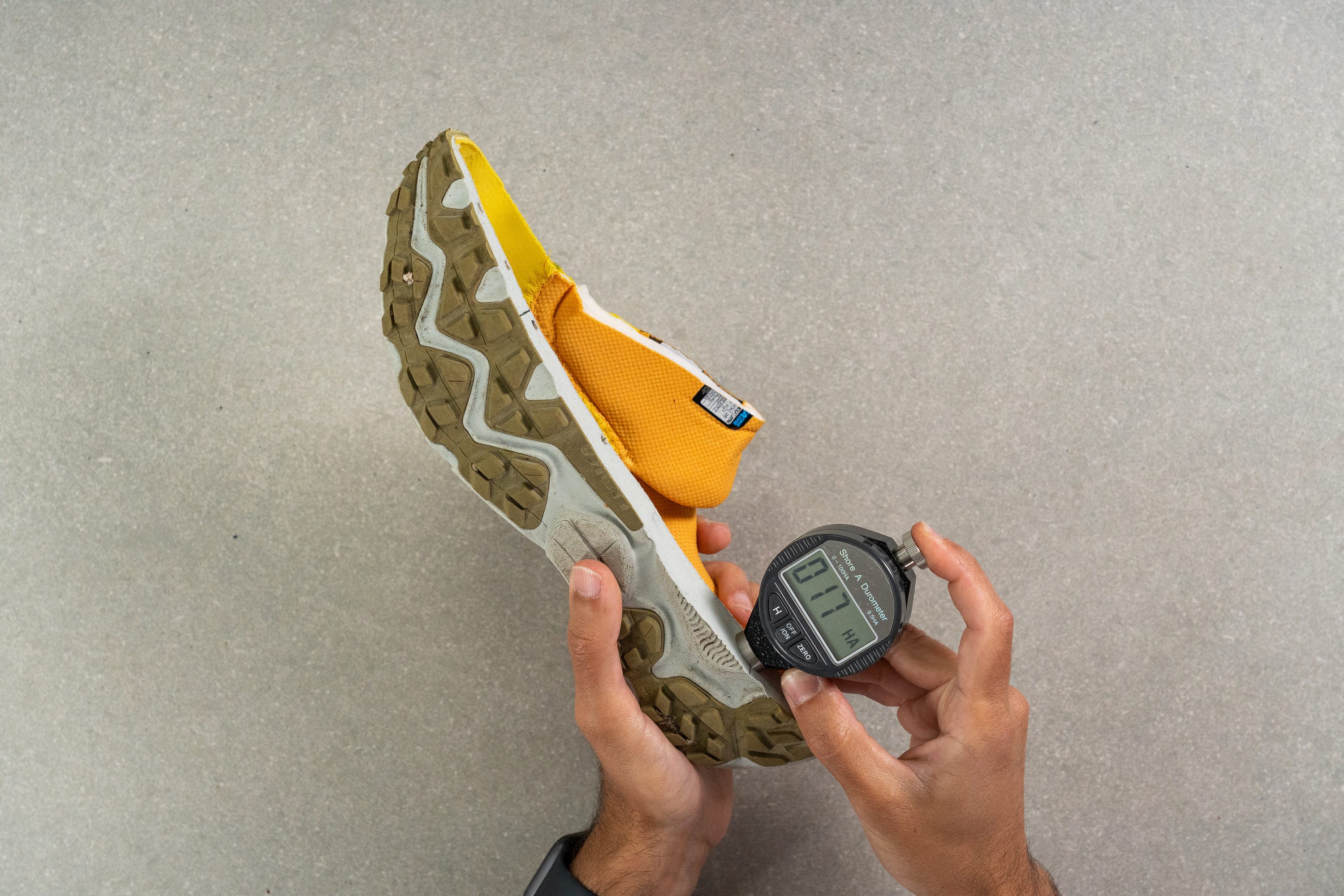
Just don't anticipate an ultra-energetic springy experience, as this Hoka shoe has no premium foam with high energy return at all.
Kick Achilles issues to the curb
There are three things that are highly beneficial for alleviating or preventing Achilles issues:
- A significant heel-to-toe drop: This shoe, as we mentioned earlier, boasts an 8.8-mm drop, which is higher than the claimed 5 mm.
- A firm heel counter.
- Extended Achilles support.
With the first requirement already met, we must emphasize that this Hoka shoe also fulfills the other two criteria. We've rated the heel counter at 4 out of 5, with 5 being the stiffest, as clearly demonstrated in the video above.
Furthermore, as depicted in the picture below, there's no pull tab present; however, it's substituted by an extended heel—a characteristic feature of Hoka shoes. This design not only facilitates easy slipping into the shoe but also provides ample support for your strongest tendon.

Don't let winter slow you down
Let's start with the good news: when it comes to winter running, this shoe has two key advantages. First, the upper keeps your feet nice and toasty—a big plus in chilly weather. Second, the shoe features an EVA-based midsole, which has major drawbacks when it gets really cold as we explained in our guide about this topic.
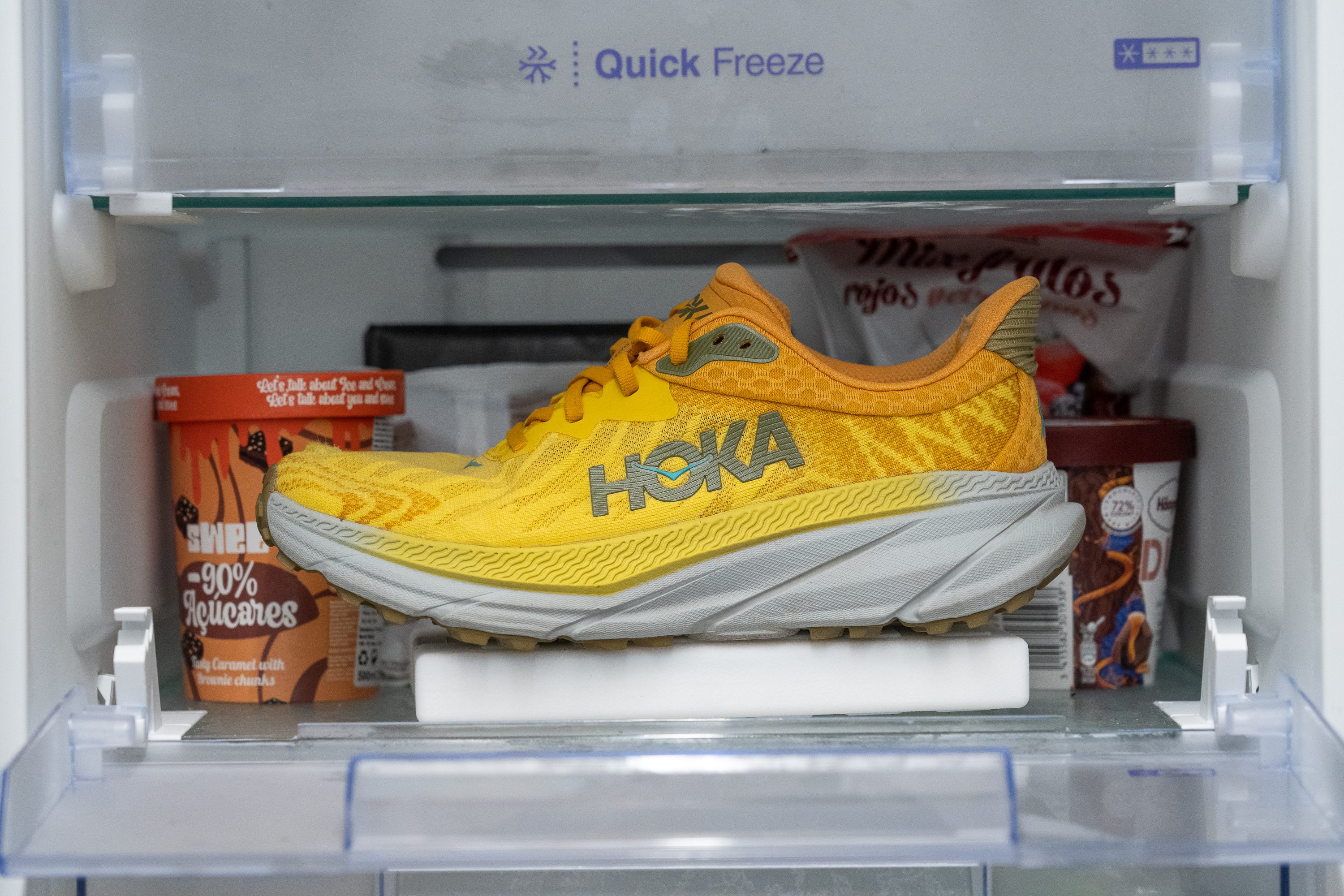
Now for the bad news: this shoe doesn't perform exceptionally well in cold temperatures.
That said, it's not that bad. After 20 minutes in our freezer, it only becomes 25.3% firmer, while the average shoe stiffens by 29.0%.
In terms of flexibility, it does become 69.4% stiffer, which is quite mediocre—considering the median is 43.5% for flexible shoes. However, since this shoe is remarkably more flexible than the majority of trail kicks available, this is not a major concern.
A stable Challenger thanks to its massive landing platform
With a fairly high stack, we were obviously worried about the potential wobble. But it never happened! We remained in full control and experienced no issues with stability.
We confirmed our upbeat assertions about stability when we uncovered the straightforward yet successful strategy that Hoka employed for the shoe. Although the upper is narrow as previously mentioned, the midsole is mega-wide. It's very easy to observe that in the video above.

The midsole spans 114.1 mm in the forefoot and a crazy 100.3 mm in the heel—that's 14% broader than the standard trail shoe and even a hair wider than the Altra Olympus 5.
This heel is also broader than the average trail shoe by a whole centimeter!
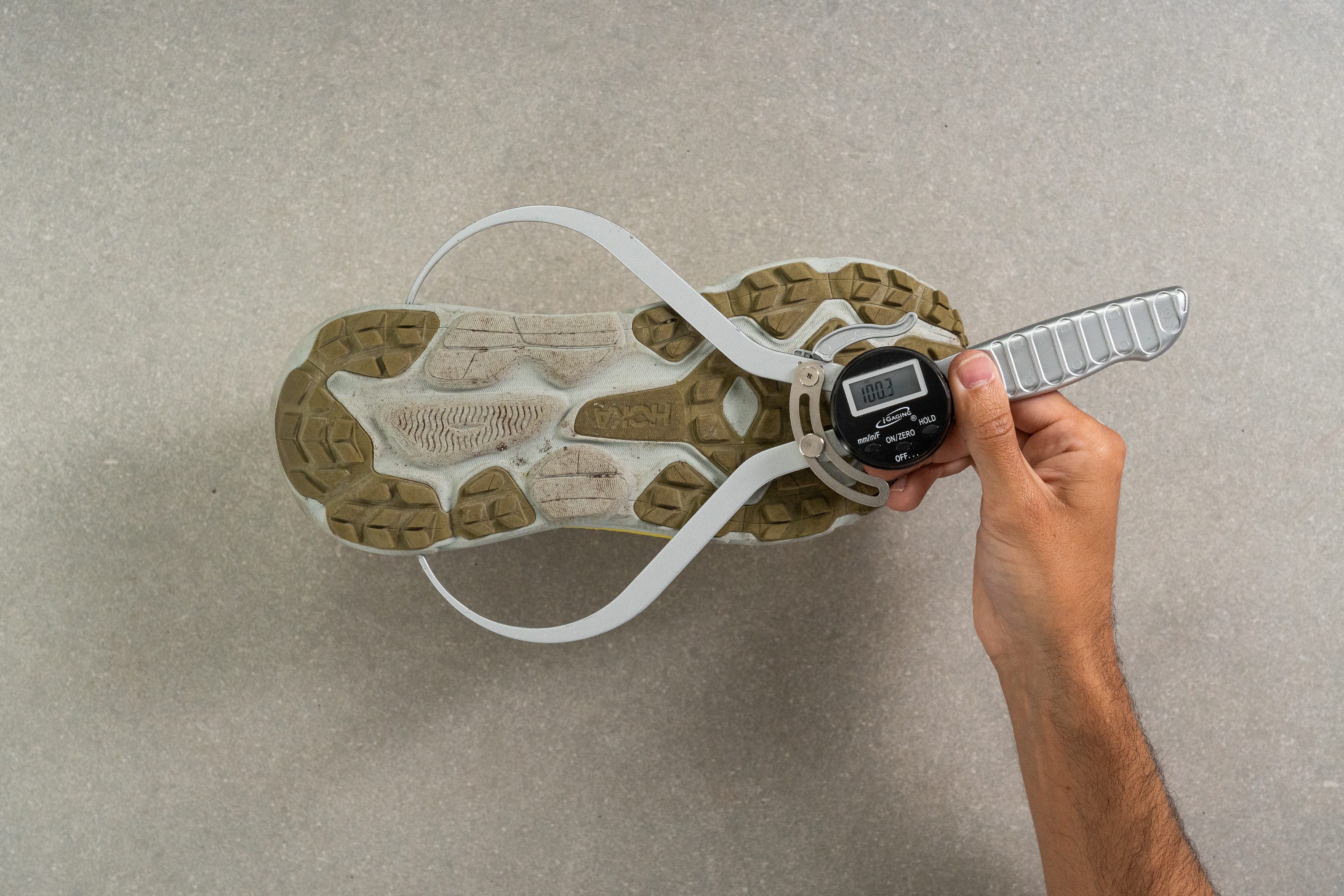
Flex your way through any terrain
In addition to being pretty flexible in the forefoot, the shoe also got a below-average value in our manual test of torsional rigidity.
Sure-footed even on wet
It’s not as aggressive as other HOKA trail shoes, but during tests, the outsole proved to be effective on gravel, tarmac, hard-packed, and light trails, even when wet.

Given that Hoka markets this shoe as more of a cross-breed rather than a pure trail runner, don't anticipate super-sized lugs or a Vibram outsole. The Challenger 7 showcases smaller, closely clustered lugs in the middle, contrasted by larger, more assertive lugs around the edges.
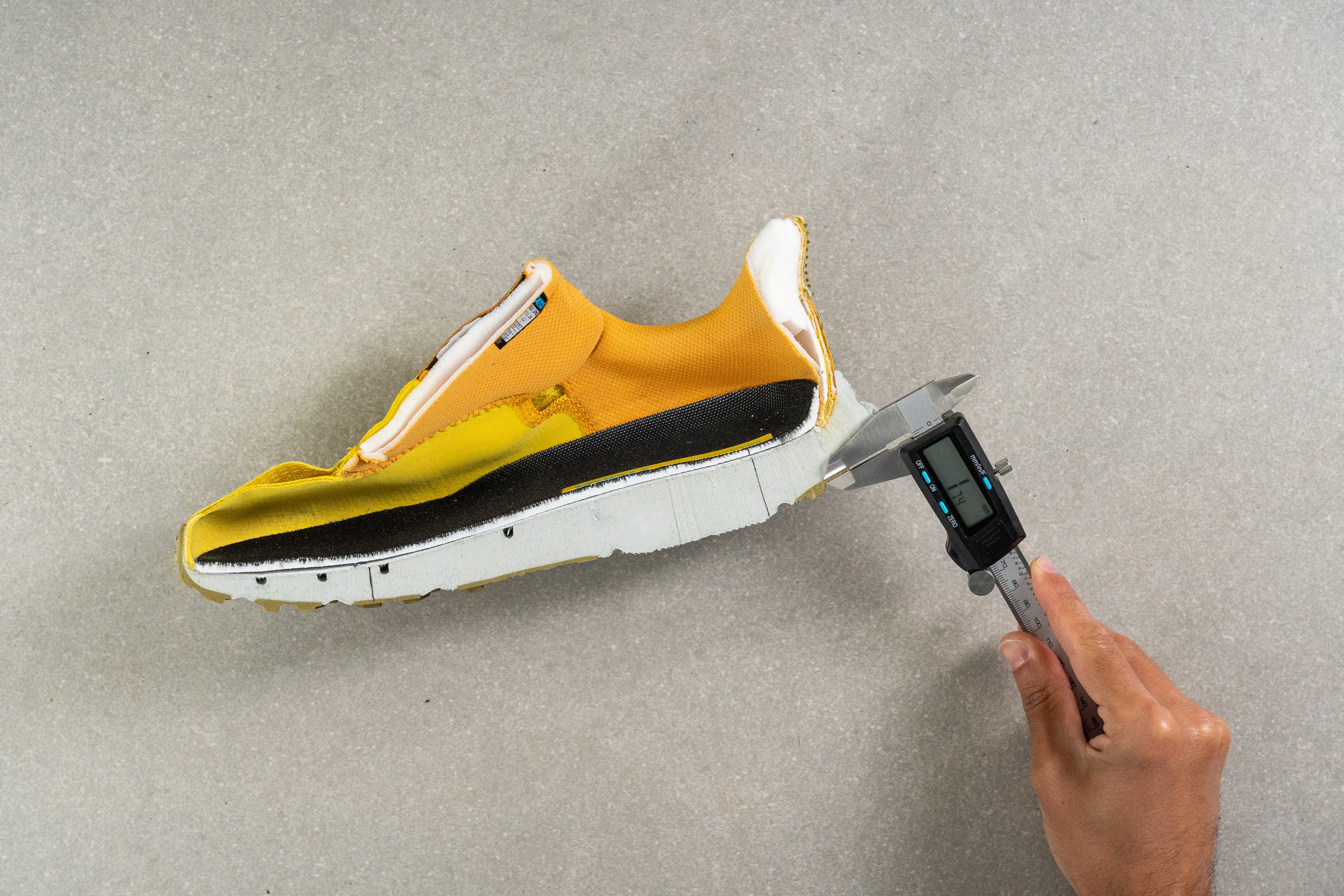
You can expect decent durability but don't hold your breath for top-tier performance in here. Our measurements placed the rubber hardness at 80.1 HC—fantastic for grip, but less-than-ideal when it comes to lifespan.

While the shoe's lugs are durable and effective, that’s not the case with the rest of the outsole. Because of exposed foam, it tends to get chewed up considerably.
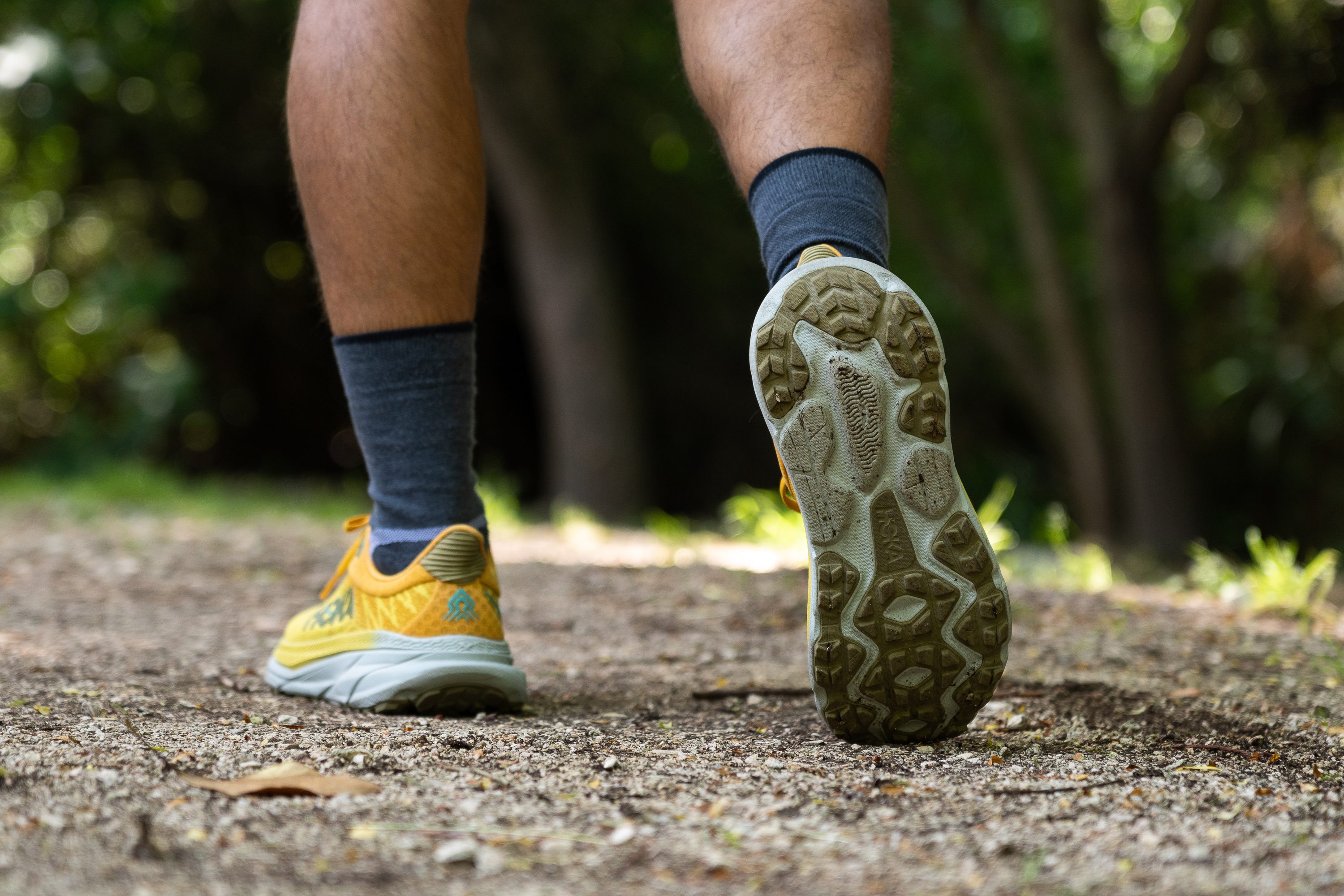
Challenger 7 is a light trail shoe that doubles as a hiking shoe
The Challenger 7 weighs now 8.8 oz (250g), which is well below the average for a trail running shoe (10.5 oz or 297g).
We are impressed with this weight-to-cushioning ratio! There is so much protection and interior padding, that it's hard to believe the shoe's lightness.
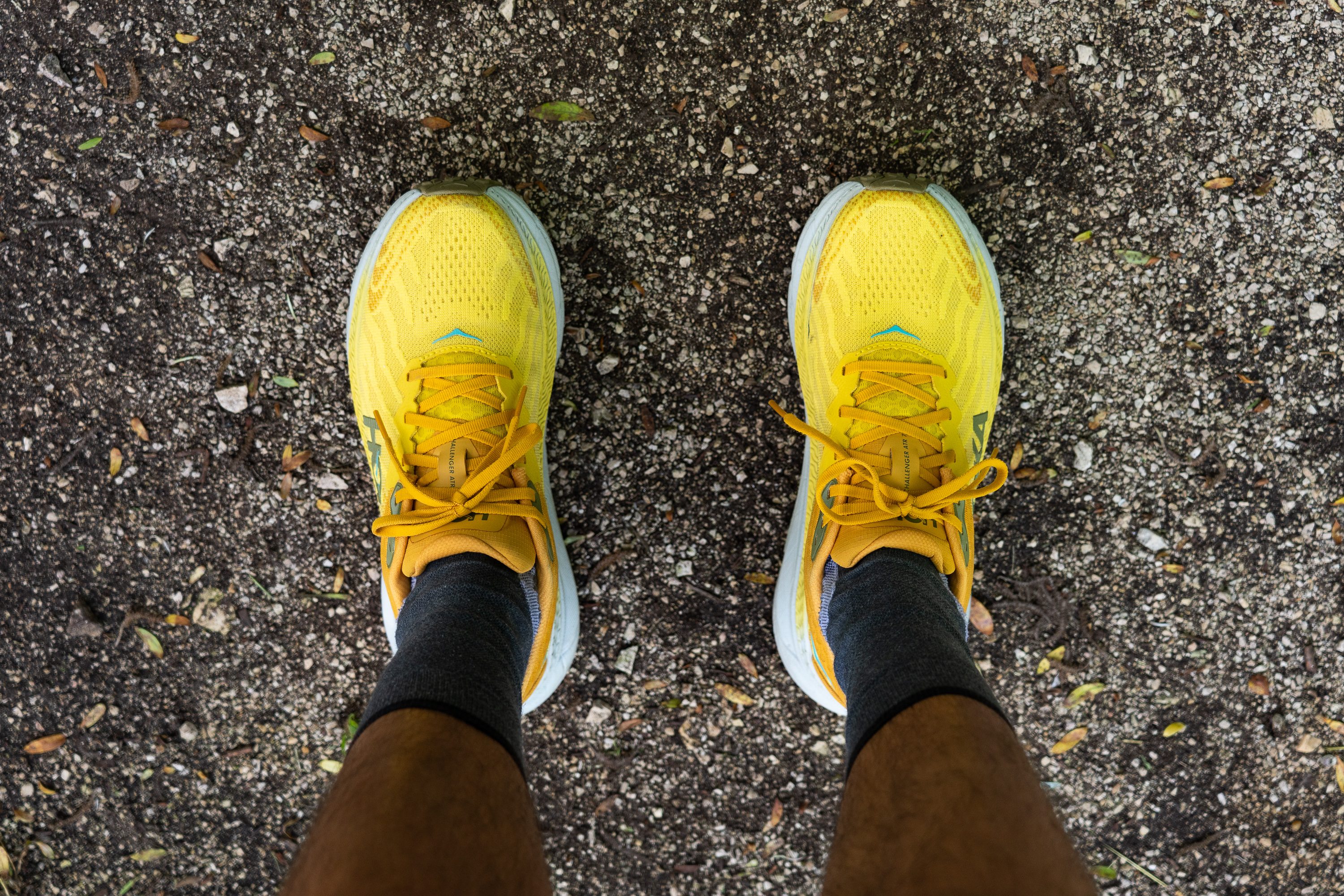
After lab-testing this all-rounder, we are sure that the Hoka Challenger 7 could be the top choice for many hikers and backpackers, not to mention its great performance for trail running. The shoe stands out for its exceptional lightness and comfort, without the excessive stack height seen in some other shoes.

It also features an incredibly thick and gusseted tongue considering its weight.
While it's not uncommon for us to come across thicker-than-average tongues in our lab tests of trail shoes like in the Nike Wildhorse 8, it's quite rare to measure one at 8.6 mm in a shoe weighing less than 9 ounces. Yet, the Challenger 7 is among those rare exceptions. Bravo, Hoka!
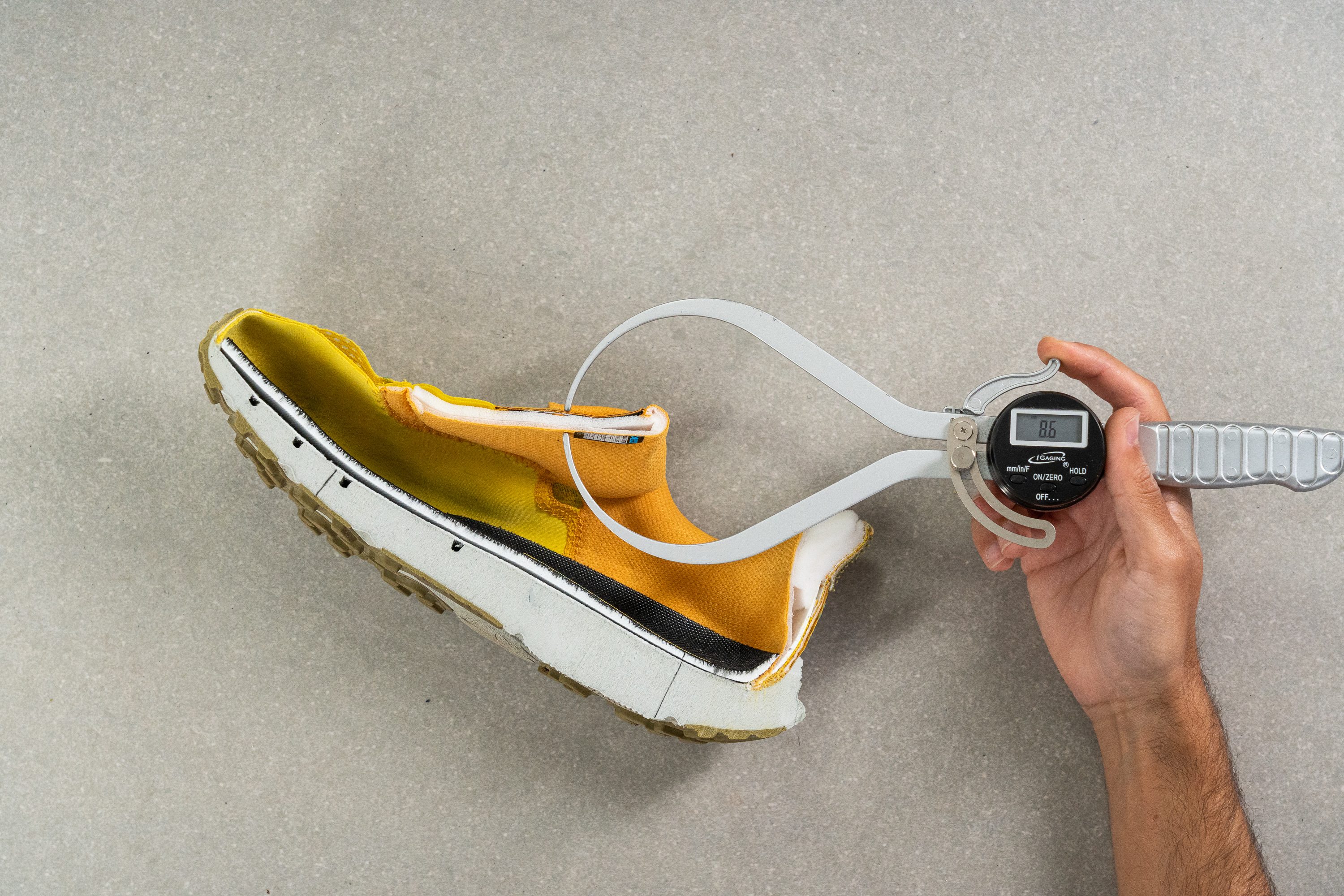
Rocks are not a problem
No rock plate is needed in the Challenger 7. There’s so much protection in the midsole that we didn't even feel most of the rocks on our way.
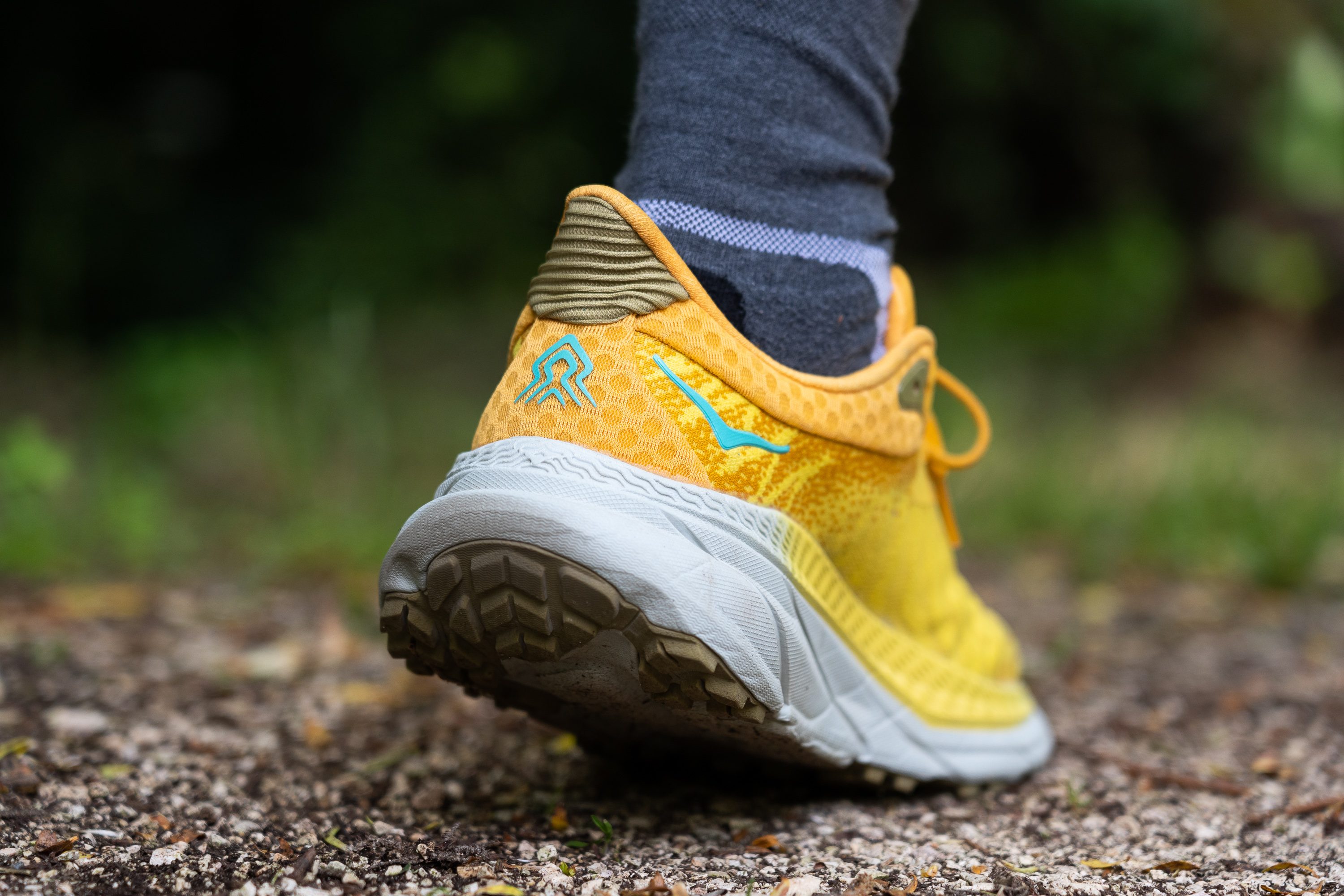
Sufficiently long laces
Finally, we had zero issues with the laces. They simply do what they are meant to do - stay tied and keep the lockdown.
